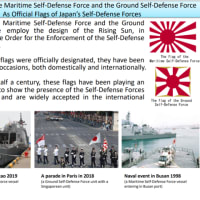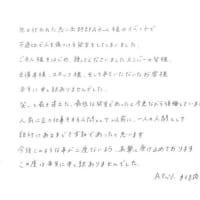コメント欄でHanaさんから教わった論文。おもしろい。
Jeffrey Levick
続きは、こちらでも
Jeffrey Levick
History of Distortion
Caricatures of Japanese People
The Portrayal of Japanese as Monolithic People
Resorting to culture as an explanation for everything/cultural determinism
The assumption that Japanese society is irrational and inferior when compared to the United States or the West
Causes of distortions/bias
Self-exoticism
Structural Constraints of NewspapersSince Europeans first encounters with Japanese, reportage of Japan has been riddled with stereotypes and paradox-rendering Japan as the West's exotic Other. Of course cultural differences and stereotypes exist everywhere, but it is the negative manner in which information is conveyed about Japan that is disturbing and damaging. While the context of the articles may have shifted over time, these distortions still find their way onto the pages of the most elite newspapers in the United States. Despite the proliferation of electronic forms of media, daily newspaper articles often still function as the original source of reporting from which television and Internet sources borrow and truncate (Downie and Kaiser 2002).
History of Distortions
There is a long history of reportage, literature and other forms of media that portrays Japan in a negative light or stereotypes the Japanese. Before Japan closed its doors to the outside world in the seventeenth century, European missionaries and traders were perplexed by their inability to contain Japan within existing stereotypes of non-European "savages," rendering Japanese people as a paradox-quasi savages prone to politeness and valor (Littlewood 1996, p3). After Japan defeated China in 1895, the Japanese were recognized as a threat by West European leaders for the first time, and the term "Yellow Peril" came into vogue as a discriminatory term for the mysterious and inhuman Japanese (Littlewood 1996, p36). World War II journalist Ernie Pyle helped popularize representations of Japanese people as non-human, comparing them to cockroaches, while explaining that the German enemies in Europe were at least "still people" (Ernie Pyle in Dower 1986, p96).
In postwar Japan, "national character" anthropologist Ruth Benedict formalized the "paradox" of Japanese culture and society in her legendary book, The Chrysanthemum and the Sword, writing, "The Japanese are to the highest degree aggressive and unagressive, both militaristic and aesthetic, both insolent and polite..." (Benedict 1971, p2-3). During the 1980s and early 1990s, as Japan's economy threatened to overcome the United States', "revisionist" journalists and scholars explained Japan's "economic miracle" as a function of "unique" characteristics of Japanese culture, history, and society (Cumings 1993).
Although "Yellow Peril" is no longer in vogue, over the past decades four types of biases persist on the pages of the top U.S. newspapers: (1) caricatures of the Japanese people; (2) the portrayal of Japanese as monolithic people; (3) the resort to culture as an explanation for everything, or cultural determinism; and (4) the assumption that Japanese society is irrational and inferior when compared to the United States or the West. (Zipangu 1998)
Caricatures of Japanese People
Caricatures of Japanese people reinforce commonly held stereotypes of Japan as a "warrior society" that has remained unchanged for hundreds of years. Everyday events are sometimes imbued with this samurai ethic. In describing koshien, the annual high school baseball tournament in Japan, the Los Angeles Times invoked caricatures of the samurai baseball player:
[Koshien] is a testament to gambaru, the samurai fighting spirit and dogged persistence so admired in Japan ."(Magnier 2000)
The "samurai spirit" and "dogged persistence" reinforce the image of the baseball warrior without recounting one play from those games or giving voice to current players. In doing so, the Western reader is rewarded with feeling satisfied that this "new" information confirms his previous knowledge of "the Japanese."
続きは、こちらでも




















日本がめちゃくちゃ好きって言う有名な外人さんも結構いるように思うんですけれど、そのような意見はいったいどこにいってしまったのだろうか。
まあメディアや学会が叩いても、一般の人は全然違うことを考えているということもよく有りますよね。
もっとも、翻ってそれは、我々日本人も同じで、アジアのあるいは、ヨーロッパのあるいは、アフリカの一国について無関心で断片的な情報しかない。
ただ、欧米からの欧米外情報というのは、なぜか優越意識が根底にあるものが多い。まあ、そこらへん、サイードさんやポスコロ論の一部が参考になるのかもしれませんね。